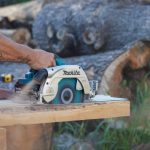We may receive a commission when you use our affiliate links. However, this does not impact our recommendations.
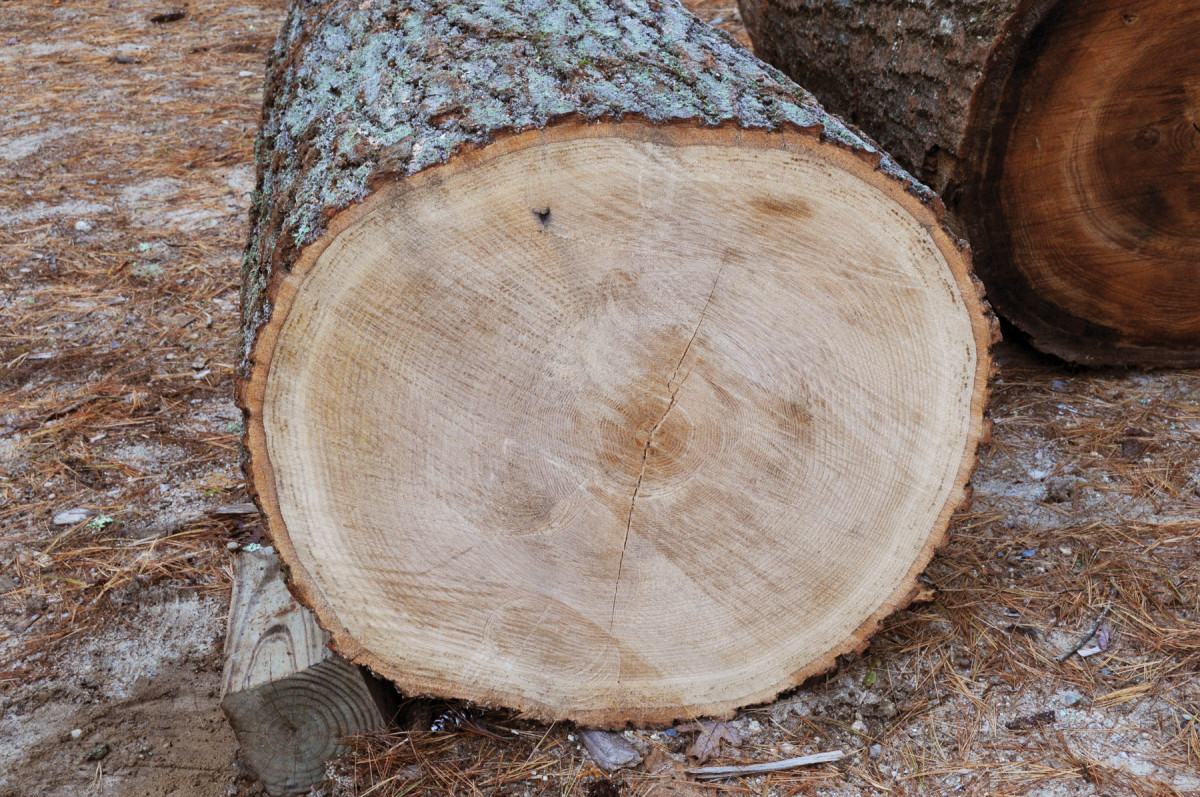
This log looks ideal. Once we started to split it, however, it was so twisted it was almost useless.
Both fast- and slow-growing wood present good opportunities.
Wood selection is an important part of any woodworking project. I sometimes feel like I take it to an extreme, like I’m some kind of oak snob. Sometimes people see pieces I reject and they can’t understand what’s wrong with me. Too much twist, a bow here or there. Not straight enough grain. I’m spoiled from decades of using the straightest-grained, radially-riven oak boards I can get. And I wouldn’t have it any other way.
When I’m selecting my wood right from the log, many factors help determine which piece of wood goes into which project. Recently I got some nice clear fresh red oak for a weekend workshop I was helping to teach through Plymouth CRAFT, a group I’m involved with in Plymouth, Mass.
At first glance, the log looked perfect, even too good maybe. Oak is the principal timber I work with making reproduction furniture, and I had my eye on any leftovers after the class was done. But even after splitting logs for 40 years, I can sometimes pick losers. This log was nearly a total loss. The minute we drove the first wedge into the end grain, I saw that the split was going to twist very badly over the 5′ length of the log.
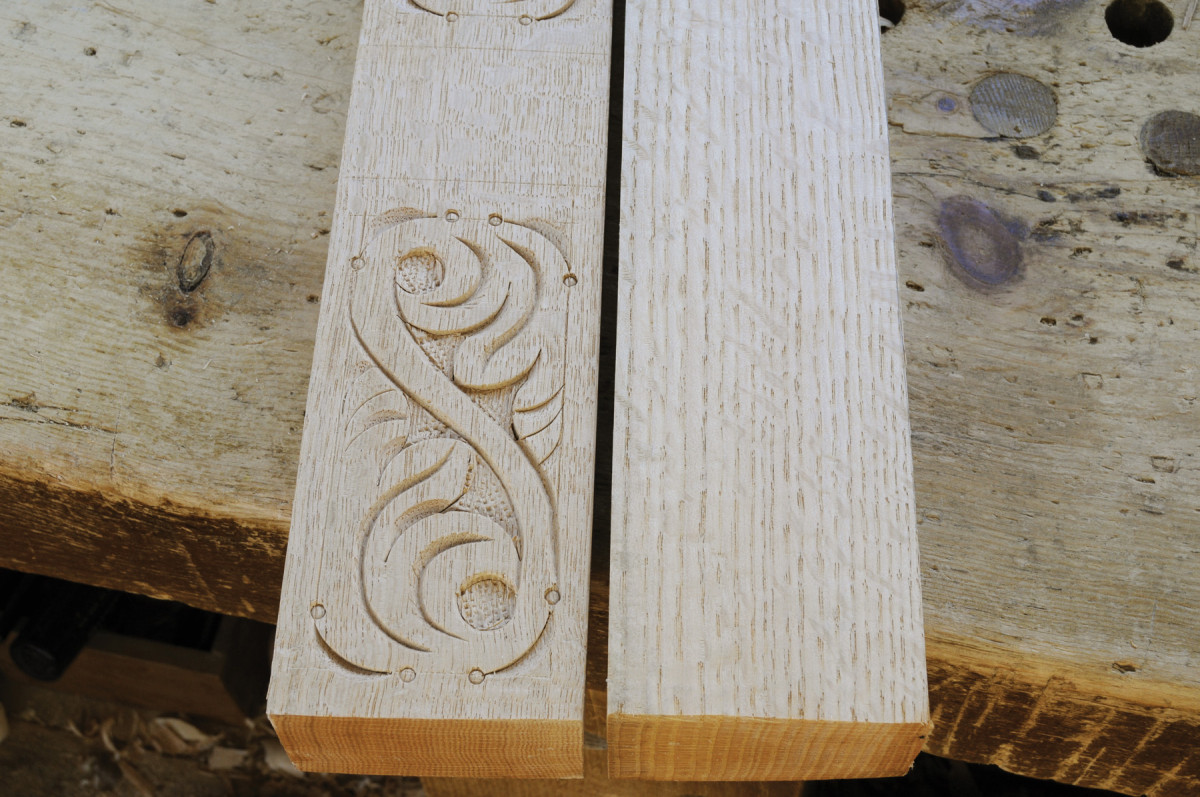
Finer grain. The carved piece on the left is slow-growing oak. Its consistent fine grain is a pleasure to work with. The piece on the right is stronger, but visually distracting.
We were able to salvage, with too much effort, the stock we needed for the workshop in making garden hurdles, but all my hopes for some new joinery stock were out the window. With so much twist, there is a lot of labor and waste trying to get flat radial boards from stock like that. You also run the risk of spending that time and effort, only to have the flat board twist as it dries. The best way to make flat boards from green wood is to split trees that grew nice and straight to begin with.
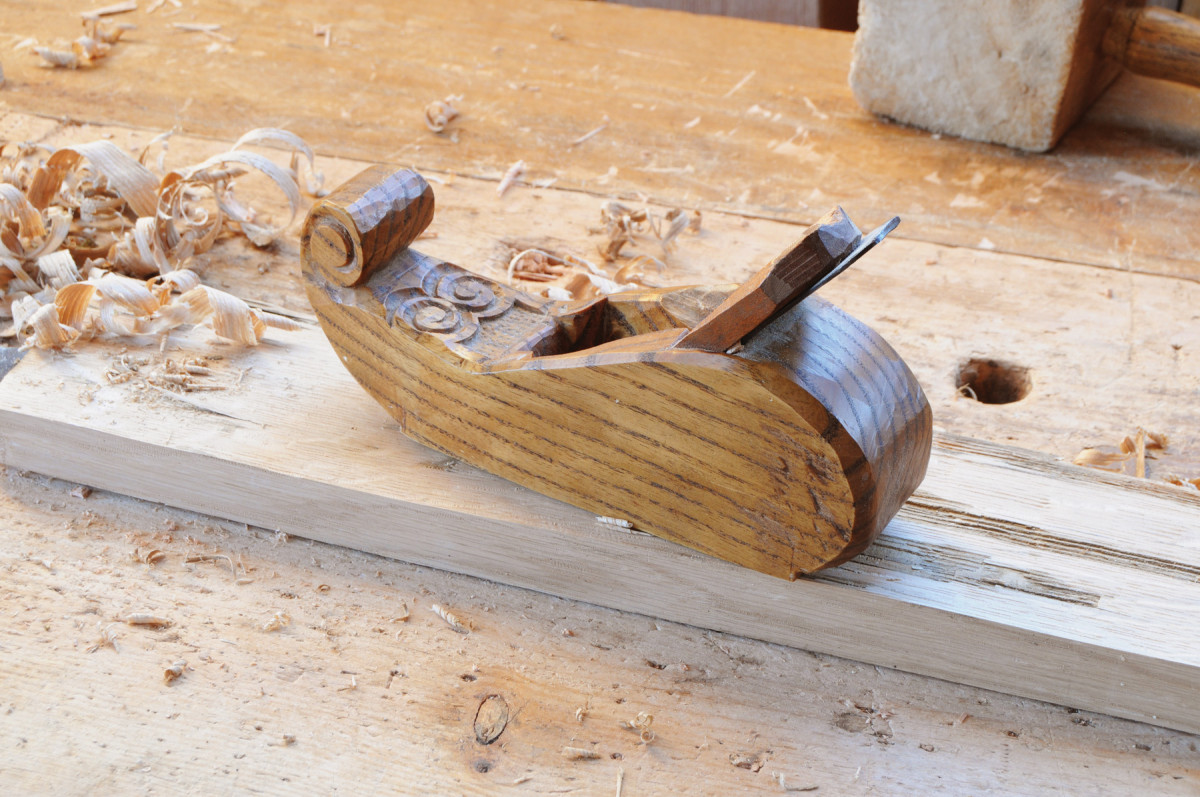
An ash plane. This little plane is based on Dutch examples from the late 17th-18th centuries. It’s about 9″ long and 21⁄4″ wide.
In addition, the tree had grown relatively fast, resulting in a very stripy-looking pattern on the radial face. For the carved furniture I make, I want the carving to carry the day, not the “figure” in the wood. The fine growth rings from a slow-growing tree blend together visually, making a nice homogenous surface that doesn’t compete with the carved patterns I use.
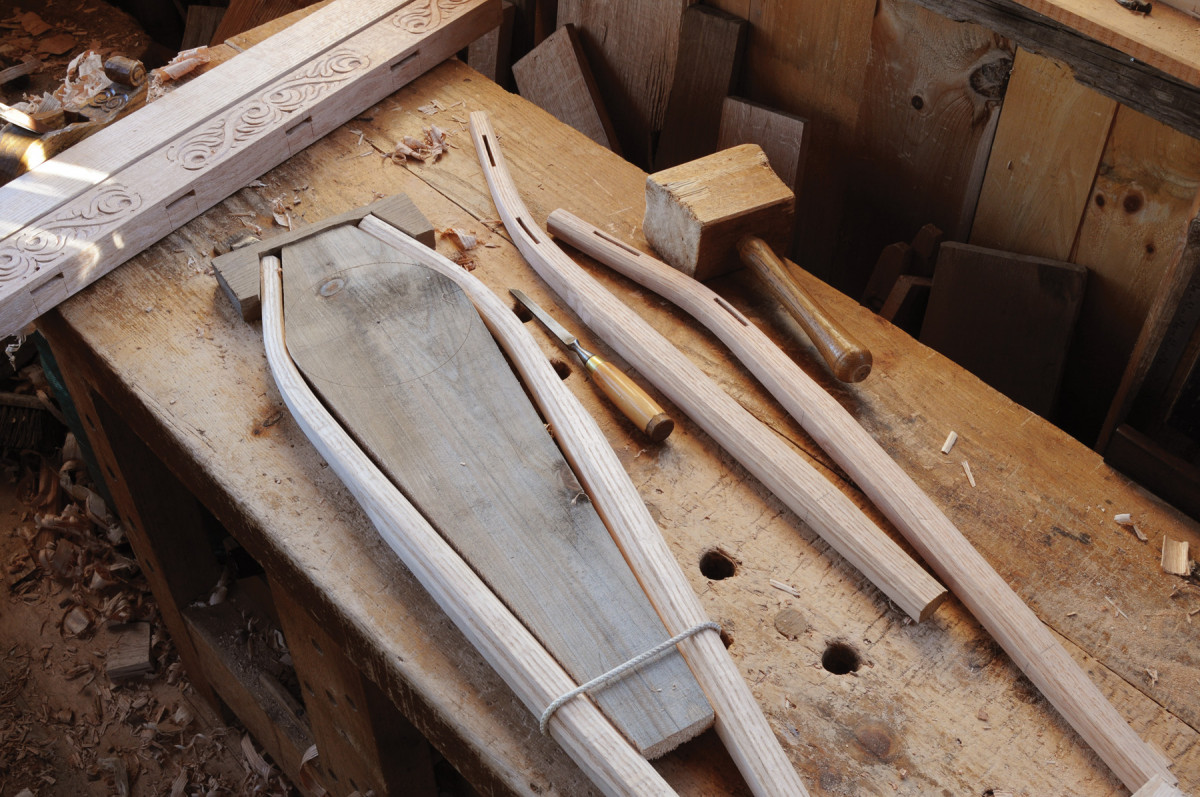
A great use for fast-growing oak. Rear posts for ladderback chairs, some in the bending form, others just mortised for the slats. These posts are 11⁄4″ in diameter and have about 6 growth rings.
Technically speaking, the fast-growing oak is stronger than the slow-growing, so I hit on a good use for this wood. Rather than my usual joined oak furniture, I’d use this stock for some ladderback chairs made using wet/dry joints. These chairs are how I began my woodworking career 40 years ago. You can very easily shape all the parts while the wood is fresh and full of moisture (in this case with drawknives and spokeshaves). Then dry the rungs (which causes them to shrink), bore holes in the still high-moisture content posts and drive home the dry rungs. The dry rungs pick up moisture from the posts and swell a bit, and the posts shrink as they dry out. You get yourself a chair for the ages this way.
Traditionally, these chairs were usually turned and made with rungs of ash or hickory, sometimes oak. The posts were often made of soft maple. It was my friend and first woodworking teacher, Jennie Alexander, who championed making them from all oak – usually white oak in Alexander’s case.
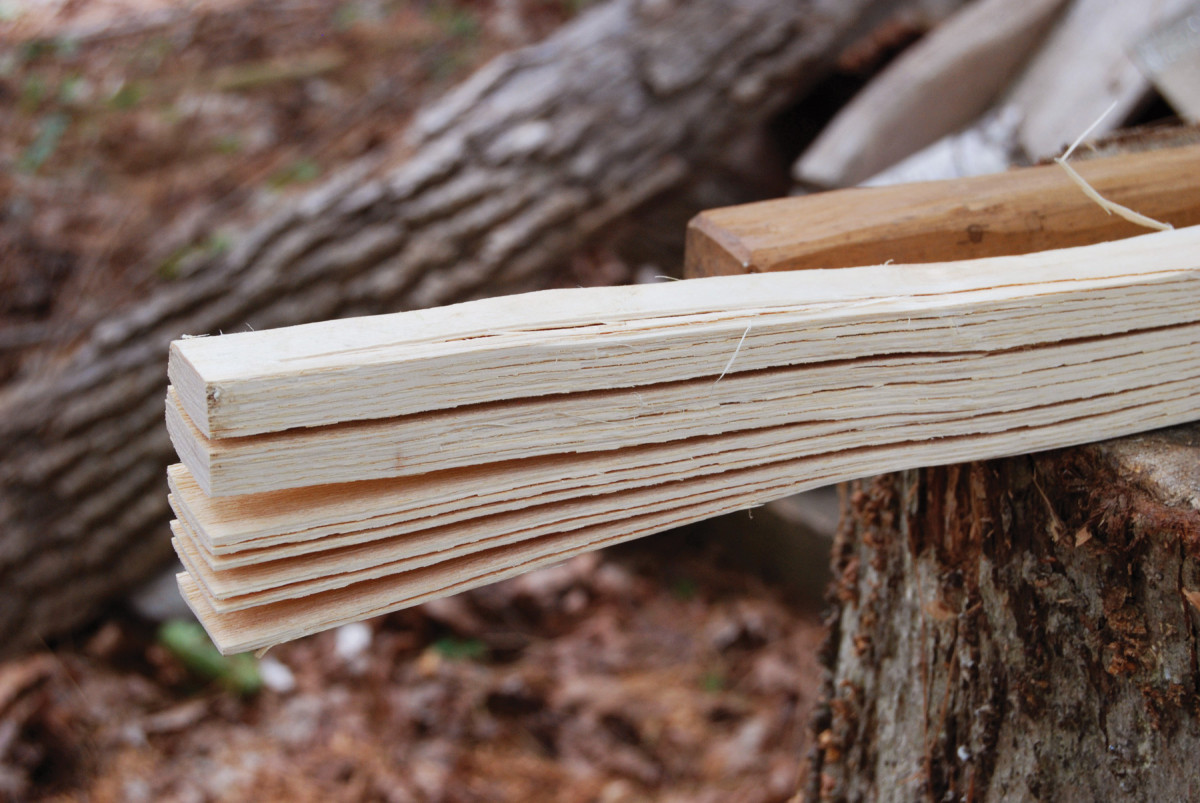
A fast way to make strips. Pounding an ash tree for basketry is a “green woodworking” technique.
The faster-growing wood is a good choice for the chairs in part for the strength, but also for its bending quality. Very slow-growing oak can break across the grain while bending. Thicker growth rings are more likely to stay intact during that process. I don’t bend enough chair posts to bother making bending straps. My pieces are steamed then bent on forms to dry and “take” the shape.
In my joinery work, I use wooden-bodied planes both new and old. Here in New England, the most common timber for 18th- and 19th-century planes was beech, followed by yellow birch. Both of these are diffuse-porous woods. Earlier plane making was more varied in its wood selection.
The archaeological finds from the warship the Mary Rose, which sunk off the south coast of England in 1545, show a wide range of woods used in making planes. I’ve tried riving and hewing thick pieces of beech for plane making, but had limited success in drying it without defects. After seeing the Mary Rose planes, I felt liberated so I chose some very fast-growing ash to make myself a small scrub plane, based on Dutch style planes from the period. It’s held up quite well, having been used daily for more than 10 years.
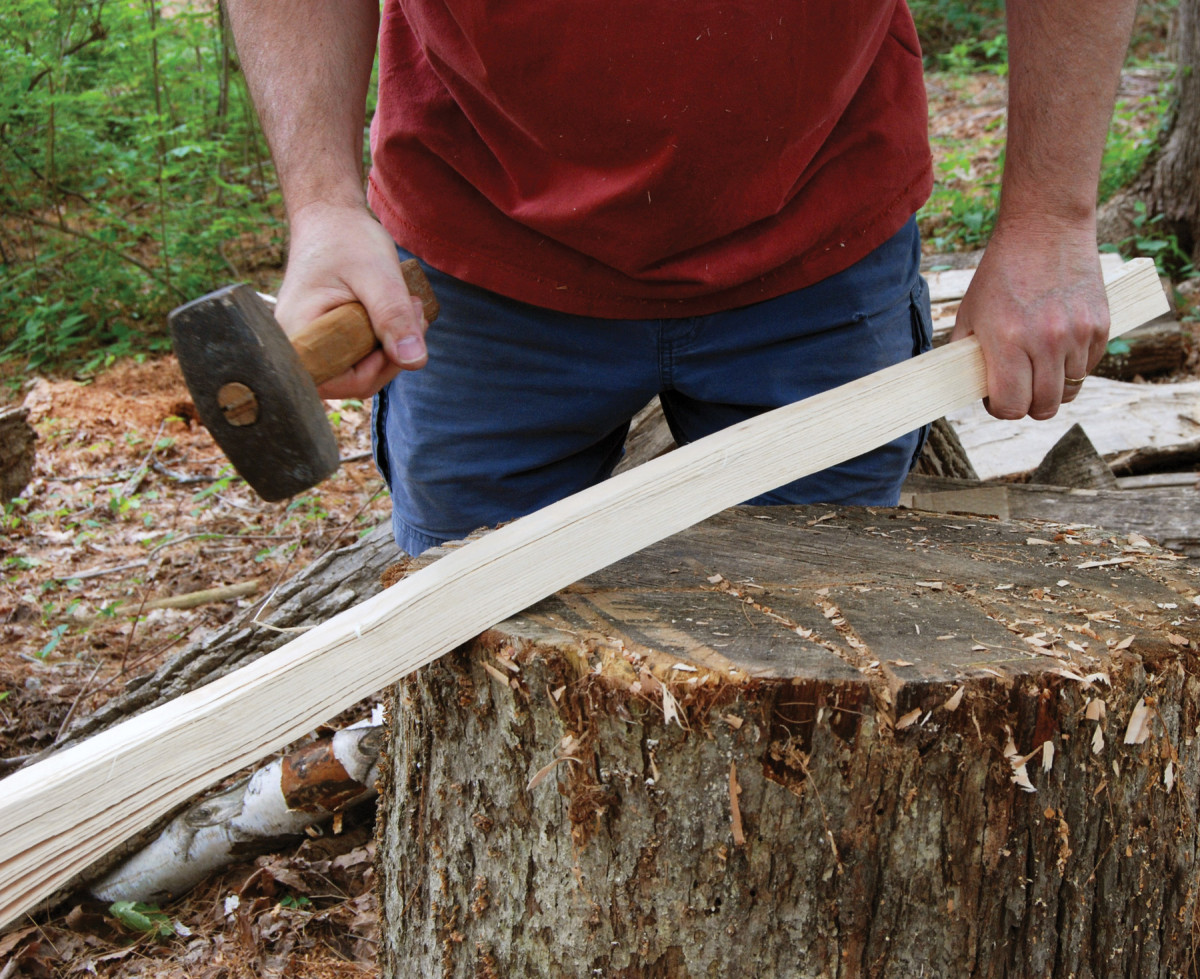
Freshly worked wood delaminates easily under the hammer blows.
I wouldn’t use slow-growing ash for this work at any point, but I have often pounded apart the growth rings of such an ash tree for basket making. In that case, the thicker rings of fast-growing trees work against you. For splint pounding I want the slower, thinner growth rings. When pounding ash splints, you’re crushing the porous springtime growth, and the more solid summertime growth becomes the splints from which I weave baskets.
Here are some supplies and tools we find essential in our everyday work around the shop. We may receive a commission from sales referred by our links; however, we have carefully selected these products for their usefulness and quality.








